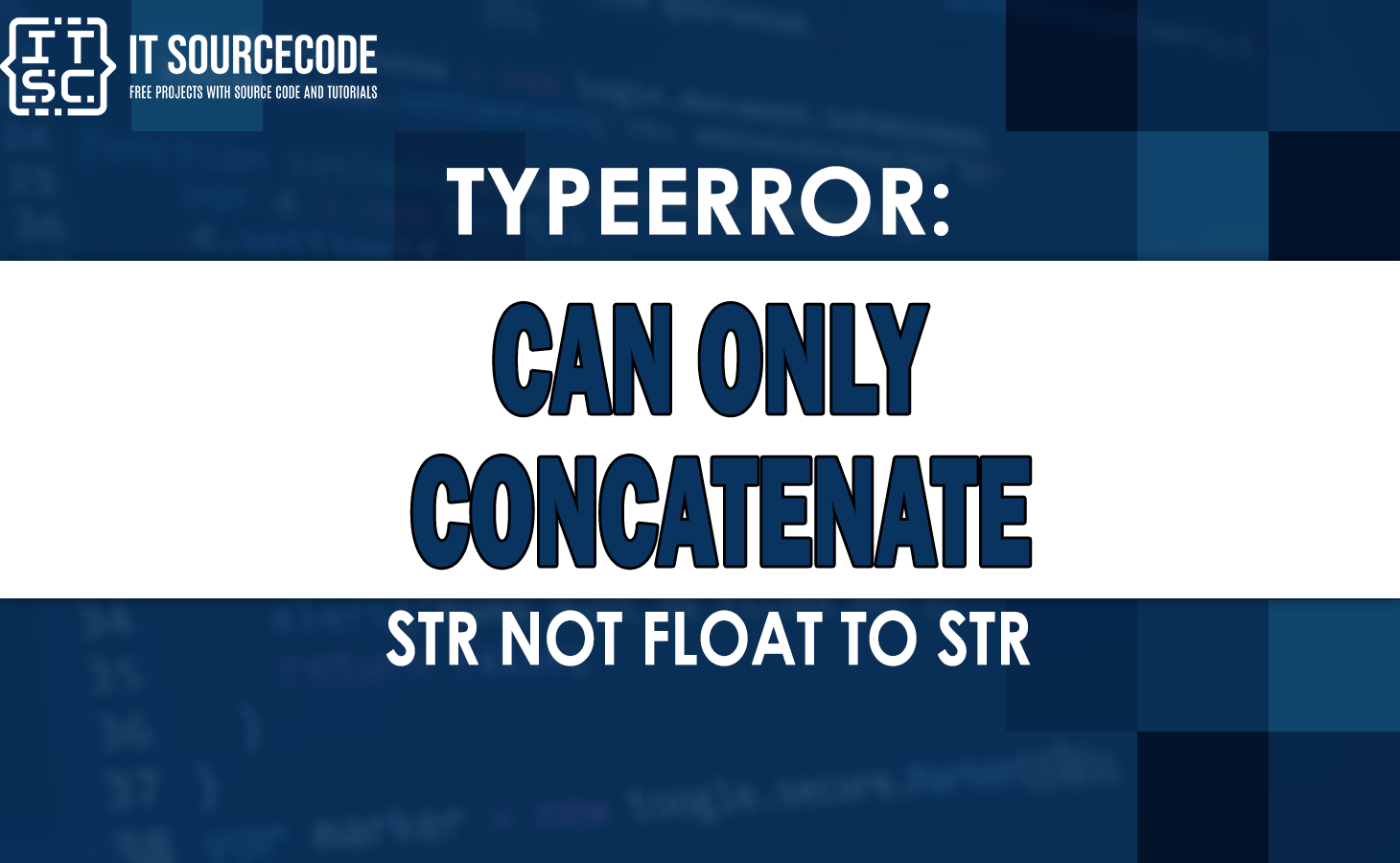In this article, we will explain to you in detail the Typeerror Can Only Concatenate Str Not Float to Str error.
Also, we’ll discuss why it occurs, how to fix it, and some common mistakes that programmers make that lead to this error.
Why Does the Typeerror: can only concatenate str not float to str Occur?
The typeerror: can only concatenate str not float to str typically occurs because you are trying to concatenate a string and a float value using the plus operator.
Here is an example of how the error occur:
Common causes of the Error
- Not converting float values to string value
- Using the wrong operator
- Using the wrong data type
How to Fix the Error Can Only Concatenate Str Not Float to Str Error?
There are multiple solutions to fix the error Can Only Concatenate Str Not Float to Str.
Here are some common solutions:
Solution 1: Convert the float value to a string value
The first solution to solve this error is to convert the float value to a string value using the str() function.
The str() function takes a float value as input and returns a string value.
Then, you can concatenate the two string values using the plus operator.
let’s take a look at the example:
age = 32
height = 5.8
message = "I am " + str(age) + " years old and " + str(height) + " feet tall."
print(message)
Outout:
I am 32 years old and 5.8 feet tall.
Solution: Using the string formatting
The second solution to solve this error is to use the string formatting.
In String formatting it will allows you to create a string with placeholders that you can replace with variable values.
You can use the format() method to replace the placeholders with the variable values.
For example:
age = 32
height = 5.8
message = "I am {} years old and {} feet tall.".format(age, height)
print(message)
Output:
I am 32 years old and 5.8 feet tall.
Solution 3: Using F-Strings
The third solution to solve the error can only concatenate str not float to str is to use f-strings.
The f-strings are a more recent addition to Python and provide a concept and readable way to format strings.
You can use f-strings to concatenate strings and variables without having to convert the variables to strings.
For example:
age = 32
height = 5.8
print(f"My age is {age} and my height is {height}.")
Output:
“My age is 32 and my height is 5.8.”
Additional Resources
The following additional resources will help you to understand more better how to handle Python typeerror:
- Typeerror can only concatenate list not str to list
- Typeerror can only concatenate str not nonetype to str
- Typeerror: can only concatenate str not bytes to str [FIXED]
Conclusion
The Typeerror Can Only Concatenate Str Not Float to Str error is a common error that programmers encounter while running a program in Python.
It occurs if you’re trying to concatenate a string and a float value using the plus operator.
By converting the float value to a string value, using string formatting, or using f-strings.
You can fix the error and concatenate strings and float values without encountering any issues.
By using any of the above methods, you can concatenate strings and float values without encountering the this typeerror.
FAQs
The Typeerror Can Only Concatenate Str Not Float to Str error occurs if you try to concatenate a string and a float value using the plus operator.
Some common mistakes that lead to the Typeerror: Can Only Concatenate Str Not Float to Str error include not converting float values to string values before concatenating them with strings.
Using the wrong operator to concatenate strings and float values, and using the wrong data type for a variable.

